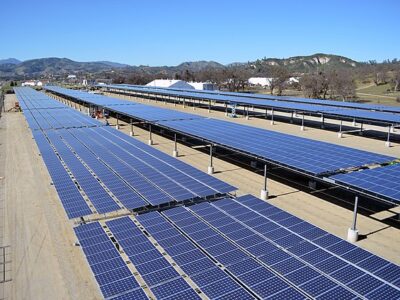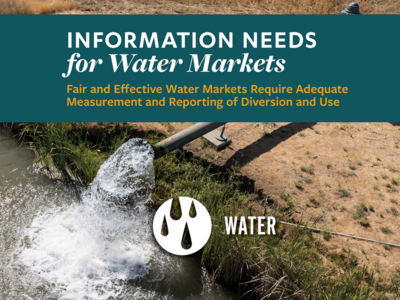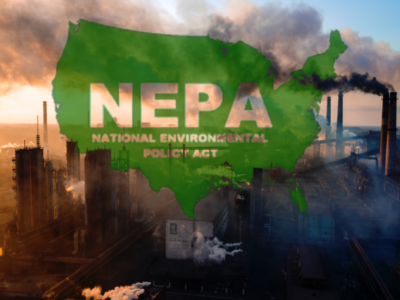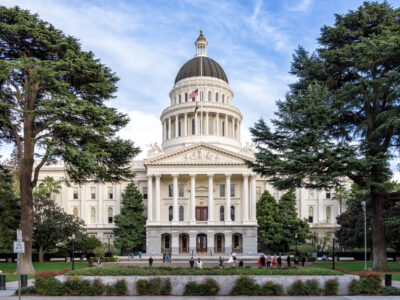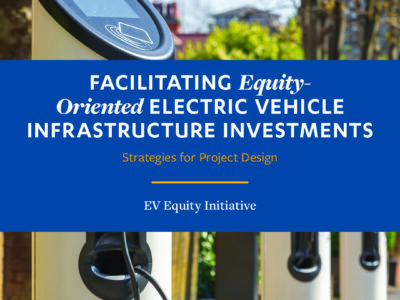How Do We Reduce Cost and Time to Build Transmission Lines?
The Burden on Ratepayers Is Not Sustainable
As California continues, and even accelerates, on its path to 100% renewable energy, it must grapple with the costs and burdens on electricity ratepayers. Among the largest rate impacts is the cost of new transmission carrying renewable power to customers. We need new approaches to transmission financing that avoid rate shocks and ratepayer backlash. With support from Net-Zero California and Clean Air Task Force, CLEE released a new report: Improving Transmission ...
CONTINUE READINGCommunity Benefits Tools and Policy Drivers:
Select mechanisms can help ensure that energy projects deliver meaningful benefits for California communities
This is the third in a series of posts detailing CLEE’s new set of resources on Equitable Climate Infrastructure Investment. Communities and local and state governments are increasingly turning to community benefits tools to support an equitable climate transition, catalyze substantive long-term investments in community priorities, and achieve effective, durable projects. CLEE's new report, Community Benefits Tools and California Clean Energy Projects, analyzes...
CONTINUE READINGU.S. Energy Industry Trends To Watch In A 2025 Trump Presidency
New Trump administration policies will impact the energy industry, but maybe not in the ways Trump supporters expect, writes Guest Contributor Allan Marks.
Allan Marks is a partner at Milbank LLP and a lecturer at UC Berkeley School of Law and UCLA School of Law. This article was originally published in Forbes, for which he is a contributor, on November 7, 2024. When Donald Trump returns to the Oval Office in January 2025, his second presidency will have widespread implications for the energy industry, especially new investments, but not necessarily in the ways his supporters might expect. A renewed emphasis on fossil...
CONTINUE READINGMeeting information needs for water markets: Understanding water diversion and use
New CLEE report examines a prerequisite for fair and effective water markets
by Nell Green Nylen and Molly Bruce Water scarcity is a growing problem for agriculture and ecosystems across the U.S. Southwest. In many areas, unsustainable water use has overstretched local water supplies, and climate change is making these supplies more volatile. Water markets have the potential to enhance climate resilience by helping water users adapt to short-term variations in water supply and by easing long-term transitions to more sustainable levels of wa...
CONTINUE READINGNEPA in the Supreme Court (Part IV)
Understanding how causation applies for NEPA reviews.
This is the final installment in our series of posts about the causation issue under NEPA. In our previous post, we laid out NEPA’s purposes and why analogies to tort law can misfire because that area of law has very different purposes. Today, building on our recent working paper, we explain the functional approach to causation that we believe courts should apply. We begin with a very basic point. Any effects to be analyzed must be environmental. Effects that do...
CONTINUE READINGNEPA in the Supreme Court (Part III)
Our guide to understanding how causation applies for NEPA reviews.
In prior posts, we’ve discussed the potential importance of the Seven Counties case, how the petitioners have made very aggressive arguments to shrink the scope of NEPA, arguments based on very narrow understandings of the kinds of causation that should be considered under NEPA, and how those arguments are inconsistent with the statute and would lead to absurd results. In our final posts, we’ll talk about how causation should apply under NEPA, including the concep...
CONTINUE READINGTrump-Proofing Time at the California Legislature?
Governor Newsom has called a special session for December 2nd. How can California lawmakers ensure California’s climate and environmental progress in the years ahead?
During the last Trump administration, California emerged as a serious counterweight to federal government backsliding on climate and the environment, and last week, some California lawmakers publicly recommitted to resisting future Trump administration efforts to reduce environmental and climate protections. On November 7, Governor Newsom issued a proclamation calling the Legislature into a special session (the second in the past three months!) to consider legislatio...
CONTINUE READINGNEPA in the Supreme Court (Part II)
Here's why the Supreme Court should reject radical arguments for limiting environmental impact statements.
Our last post explained the background of the Seven Counties NEPA case, which is currently pending in the Supreme Court. Today, we discuss the radical arguments that have been made in the case and why they should be rejected. NEPA requires that agencies consider the environmental effects of their projects, but the petitioners raise hairsplitting arguments to exclude obvious effects due to technicalities. We consider their arguments one by one. More detailed analysis ca...
CONTINUE READINGNEPA in the Supreme Court (Part I)
A pending case could mean radical retrenchment of a foundational environmental law.
In what could turn out to be another loss for environmental protection in the Supreme Court, the Court is about to decide a major case about the scope of the National Environmental Policy Act of 1969 (NEPA). The case, Seven County Infrastructure Coalition v. Eagle County, has important implications for issues such as whether NEPA covers climate change impacts. The same groups that succeeded in drastically cutting back on federal wetlands jurisdiction a few years ago are ...
CONTINUE READINGNew Report: Equity-Oriented EV Infrastructure Development
Strategies for embedding community input in project design.
This is the second in a series of posts on CLEE's new set of resources on Equitable Climate Infrastructure Investment. The national EV market could grow nearly tenfold by 2030. Many state vehicle emissions standards (led by California) are driving a transition to zero-emission vehicles over the coming decade, and state, federal, and private sector dollars are increasingly flowing into EV infrastructure across the U.S. However, EV charging access faces significant barr...
CONTINUE READING




